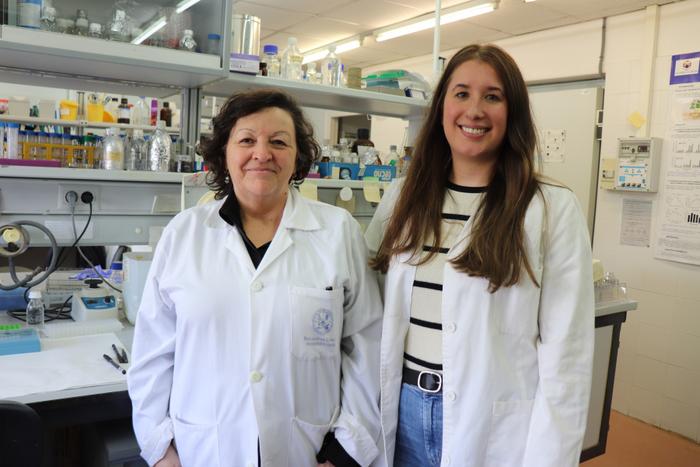The CRISPR Technique: Revolutionizing Bean Genetics and Nitrogen Fixation
In recent years, CRISPR has emerged as a revolutionary tool in the field of genetics, allowing researchers to make precise edits to DNA with unprecedented efficacy. The 2020 Nobel Prize in Chemistry awarded to Emmanuelle Charpentier and Jennifer Doudna recognized the monumental impacts of this gene-editing technology. One of the most compelling applications of CRISPR exists in the exploration of leguminous plants, particularly common beans, which are invaluable for both agricultural and nutritional purposes. A dedicated research team from the University of Cordoba has harnessed this technique to delve into the complexities of nitrogen metabolism in beans, revealing promising insights that could enhance agricultural sustainability.
Beans hold a unique position in global agriculture, not just as a major source of protein, but also because they possess the natural ability to fix atmospheric nitrogen into the soil. This ability lessens the need for nitrogen fertilizers, which are often detrimental to the environment due to runoff and pollution. However, unearthing the genetic underpinnings that allow beans to efficiently fix nitrogen has traditionally proven challenging. The intrinsic resistance of these plants to genetic transformation has hindered researchers from fully understanding the behavior and functions of their genes.
In a groundbreaking study, the Molecular Physiology and Plant Biotechnology Group at the University of Cordoba confronted these hurdles head-on. Their objective was to determine the roles of two vital genes involved in the metabolism of purine nucleotides, specifically focusing on the synthesis and recycling of adenine—an essential nitrogenous base integral to DNA and RNA. Adenine’s recycling is particularly critical in bean plants, as it closely relates to how effectively these plants interact with symbiotic nitrogen-fixing bacteria within their nodules.
To navigate the intricacies of plant genetics, the research team, led by Josefa Muñoz and Cristina López, opted for the CRISPR/Cas9 gene-editing strategy. They aimed to silence specific gene copies systematically, eliminating redundancy and revealing the distinct functions each gene might hold. This intricate approach was necessitated not only by the genetic similarities among the adenine phosphoribosyl transferase (APRT) gene copies but also by the limitations imposed by traditional transformation techniques that had failed to yield mutants in bean plants.
The researchers were successful in creating two functional mutants of the APRT gene using CRISPR technology, which allowed for detailed functional analysis of these variants. The results were enlightening; they confirmed that while one of the gene copies was indeed responsible for recycling adenine, the other played an indispensable role in the regulation and growth of cytokinins—plant hormones that influence various developmental processes, including root and nodule growth. This distinction was previously obscured due to the almost indistinguishable nature of the gene copies.
Further investigations revealed that the expression patterns of these two APRT gene copies differed significantly, hinting at greater functional specialization than previously assumed. One gene variant was primarily localized within the chloroplasts, playing a role in photosynthetic processes, while the other was expressed in the cytosol, highlighting the intricate and compartmentalized nature of cellular functions in plants. This specificity in genetic expression underlines the potential of utilizing CRISPR technology to dissect similar genetic mysteries in other crops and species.
Importantly, the discovery illustrated not only the potential of gene-editing tools like CRISPR/Cas9 to unravel complex genetic relationships but also provided deeper insight into the evolutionary adaptations of beans. The research team posited that additional studies should be undertaken to explore the functions of the remaining two APRT gene copies, given that they might also contribute significantly to key traits such as drought resistance and overall plant growth.
With these advancements, the role of genetic engineering in enhancing agricultural sustainability becomes apparent. By elucidating the capabilities of beans to fix nitrogen effectively, researchers can pave the way for the development of new crop varieties that are resistant to environmental stresses and require fewer chemical fertilizers. This research not only has the potential to improve the nutritional profiles of beans but can also significantly mitigate the environmental impact of agriculture, highlighting a clear path forward for sustainable farming practices.
As the field of genetic research continues to evolve, the implications of the University of Cordoba’s findings extend beyond just beans. They resonate throughout the agricultural community, urging a re-evaluation of traditional breeding mechanisms. CRISPR/Cas9 technology, with its ability to offer precise, reliable modifications to plant genomes, will surely play a pivotal role in shaping the future of crop improvement strategies.
This exciting research opens new avenues for understanding agricultural plants’ genetic makeup, leveraging gene editing to enhance food security. By continuing to investigate the specific roles of the adenine recycling enzymes and other associated metabolic pathways, scientists can create crops that thrive in changing climates, maintain soil health, and serve populations worldwide.
Ultimately, the work undertaken by this research team not only contributes to a growing body of scientific literature on CRISPR applications but also underscores the urgency for innovative solutions in food production. Rather than relying solely on external inputs such as fertilizers, the focus is shifting towards enhancing the capabilities of plants themselves, crafting a resilient agricultural system well-equipped to meet the demands of a growing population.
As the world stands at a crossroads in agricultural development, the blend of traditional knowledge and modern techniques heralds a new era of scientific exploration. The potential benefits of these findings promise not just to enrich our understanding of plant metabolism but to transform how we cultivate and benefit from these essential crops.
Subject of Research: The functional specialization of adenine salvage proteins in common bean through CRISPR/Cas9 editing
Article Title: CRISPR/Cas9 editing of two adenine phosphoribosyl transferase coding genes reveals the functional specialization of adenine salvage proteins in common bean
News Publication Date: 10-Jan-2025
Web References: http://dx.doi.org/10.1093/jxb/erae424
References:
Cristina María López, Saleh Alseekh, Félix J Martínez Rivas, Alisdair R Fernie, Pilar Prieto, Josefa M Alamillo.
Image Credits: Credit: University of Cordoba
Keywords
CRISPRs, Regulatory genes, Adenine, Discovery research




